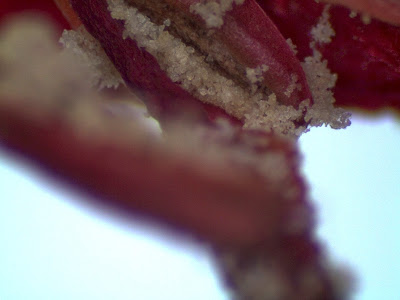

Pollen Grain Texture
False Cedar Pollen (Cedrus deodara)
Magnification: 2000x
Taken by: Ms. Lindahl and our group (Emily, Abe, Luis, Anastasia)
___________________________________________________________________________
Pollen Grain Texture

Daisy Pollen (Bellis perennis)
Magnification: 2000x
Taken by: Ms. Lindahl and our group (Emily, Abe, Luis, Anastasia
_________________________________________________________________________________
Pollen Grain Texture
Fuchsia (Fuchsia magellanica)
Magnification: 2000x
Taken by: Ms. Lindahl and our group (Emily, Abe, Luis, Anastasia)






















